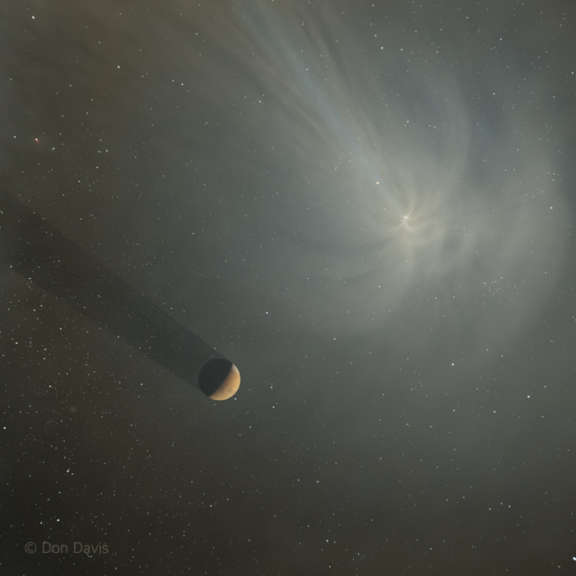Karl Battams • Jan 27, 2014
A new comet observing campaign for C/2013 A1 (Siding Spring)
You thought you were rid of us...but we're baa-aaack!
Didn't mean to make that sound creepy but, like a bad conspiracy theory, we never really go away.
Yes, we've been quiet. Sorry, but there's not a huge amount of "breaking news" you can post about a comet that was destroyed by the Sun two months ago. Science is still ongoing of course, and papers are being written and submitted. Matthew Knight and I have one on the verge of acceptance, for example. So once we start getting those results, we'll blog about them. But that's not what this blog post is for. This one regards the new message that we just posted to the front page of the CIOC website...
Here's the bottom line: we're starting a new Comet Observing Campaign! Following the spectacular and, quite frankly unprecedented, success of the Comet ISON Observing Campaign, we are launching a similar venture for another unique cometary encounter that's happening this year.

In October 2014, comet C/2013 A1 (Siding Spring) will pass extremely close to Mars at approximately 138,000km (~85,000 miles). This perhaps doesn't sound very close, and indeed if it were an asteroidal object then we wouldn't pay so much attention. But this is a comet: an object that will have a long icy tail behind it and, crucially, a huge dusty/icy cloud (coma) surrounding it. Comet comae are big... very big... and there's a good chance that we are about to witness the first recorded instance in history of a planet passing through the coma of a comet!
That's a pretty awesome and big deal, the timing for which couldn't be better. Why? Because we have a robotic army orbiting and roving the Red Planet, and they're going to get a close-up look at this amazing event as it unfolds!
I'm sure a ton of questions immediately jump into your heads. How will this affect the planet? Will the comet survive past Mars? How will it affect the spacecraft? Can the comet hit Mars? Will Mars change the orbit of the comet and send it hurtling towards Earth and wipe us out with tsunamis and nuclear winter and pestilence and plague and....?? *breathless gasp*
OK, hopefully most of you didn't go quite as far as the last one but some people will... this event is primed for some top-class conspiracy theories. Sigh. But to briefly answer the reasonable questions: the comet is safe, Mars is very safe, and Earth is even safer. As for the safety of the spacecraft... well, that's where the astronomy community comes into play.
A comet's coma does contain little chunks of dust and ice. Not big chunks - probably sand-grain size or smaller - but at tens of thousand of miles per hour, a sand grain kinda stings a bit if it hits you, particularly for a delicate spacecraft. So one of the goals of this new observing campaign will be to use our amazing army of ground-troops (aka amateur and professional astronomers) to learn as much about Comet Siding-Spring as possible. Observations over the summer in particular will help us assess just how dusty or gassy the comet is, and how that might affect the environment in which the Mars satellites are flying.
I will say upfront - and this is my own personal opinion with limited knowledge of this comet right now - I think it extremely unlikely that the spacecraft will be harmed by the passing debris from the comet. Dust in the coma will be extremely sparse at those distances from the nucleus, so I'd be willing to bet good money (or even beer!) that the spacecraft will be just fine. What is certain is that we have another unique opportunity get some amazing science about another Oort Cloud comet, and maybe even learn a thing or two about Mars' atmosphere in the process! With this happening in October, and ESA's Rosetta landing on a comet in November, we have another exciting year of comets ahead of us!
So please go ahead and read the message we put on the front page of the CIOC website, and stay tuned. We have not finalized logistics or websites and such yet, so hold on for that info, and stay tuned in the coming weeks for detailed answers to FAQs, etc.
Editor's note: This blog entry was originally posted at the Comet ISON Observing Campaign website and is reposted here with permission. --ESL
Support our core enterprises
Your support powers our mission to explore worlds, find life, and defend Earth. You make all the difference when you make a gift. Give today!
Donate

 Explore Worlds
Explore Worlds Find Life
Find Life Defend Earth
Defend Earth

